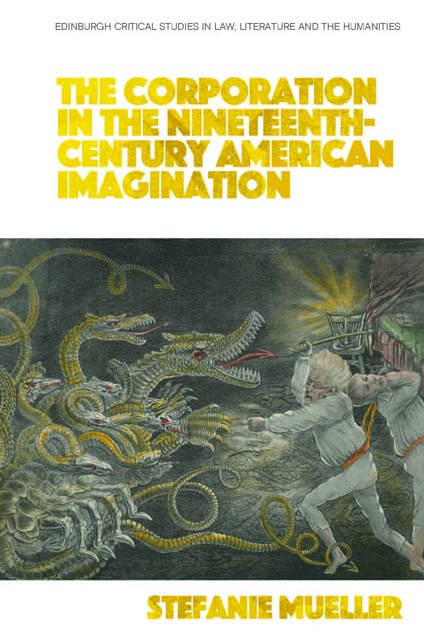Book contents
- Frontmatter
- Contents
- List of Figures
- Acknowledgments
- Introduction: The Many and the One: Corporate Bodies and the Body Politic in US Law and Culture
- 1 Narrating Monopoly and Empire: Austin, Irving, and the Charles River Bridge Case
- 2 The Soulless Corporation: Cooper and the Decline of the Republic
- 3 Satanic Corporate Agents in the Marketplace: Hawthorne, Melville, De Forest, and the Uses of Allegory
- 4 Incorporating the Nation: Ruiz de Burton and “Quasi Public” Corporations
- 5 The End of Individualism: Tarbell, Norris, and the Power of Combinations
- Conclusion: Frankenstein in a Gray Flannel Suit
- Bibliography
- Index
4 - Incorporating the Nation: Ruiz de Burton and “Quasi Public” Corporations
Published online by Cambridge University Press: 25 April 2023
- Frontmatter
- Contents
- List of Figures
- Acknowledgments
- Introduction: The Many and the One: Corporate Bodies and the Body Politic in US Law and Culture
- 1 Narrating Monopoly and Empire: Austin, Irving, and the Charles River Bridge Case
- 2 The Soulless Corporation: Cooper and the Decline of the Republic
- 3 Satanic Corporate Agents in the Marketplace: Hawthorne, Melville, De Forest, and the Uses of Allegory
- 4 Incorporating the Nation: Ruiz de Burton and “Quasi Public” Corporations
- 5 The End of Individualism: Tarbell, Norris, and the Power of Combinations
- Conclusion: Frankenstein in a Gray Flannel Suit
- Bibliography
- Index
Summary
When President Abraham Lincoln signed the Pacific Railway Act in 1862, the document created the Union Pacific Railroad, the first federally chartered corporation since the Second Bank of the United States. The purpose of this corporation was to build the eastern part of the first transcontinental railroad. The western part, building from Sacramento, was given to the Central Pacific Railroad, a company that had been incorporated in California the previous year. To finance the undertaking, the Act also authorized the issuance of government bonds and federal grants of land to the railroads. Before the outbreak of war, the project had taken up years of debates in Congress. Among the proposed routes, a line along the 32nd parallel had been favored by the southern states, whereas the northern states had preferred a central route. In 1862, the building of the transcontinental railroad was a matter of the preservation of the West for the Union North. “The railroad to the Pacific,” C. Vann Woodward explains, “was part of the struggle for control over the Western territories, and part of the contest for sectional balance of power; it was behind the Kansas-Nebraska Act and the repeal of the Missouri Compromise” (92).
After the war and during Reconstruction, it became a matter of national unity: of bringing North and South closer together by facilitating travel and commerce across the continent. Published in 1886, Henry Field’s collection of travel sketches, Blood Is Thicker Than Water, illustrates this point. When his train arrives at Danville, Virginia, the cars have to be lifted onto the southern tracks on account of the difference in width of northern and southern gauges. Field marvels at the process, and then adds:
In a few weeks the gauge of the whole railway system of the South is to be changed to conform to that of the North. It will cost millions, but the object is thought to be worth it all. May we not interpret this as a happy symbol of other changes by which the course of things North and South is hereafter to be run on the same track to the end of common prosperity? (16)
And even though the sentiment is declared by the satanic railroad agent, even De Forest’s Honest John Vane expresses this idea repeatedly: “Close up the bloody chasm. Bind together the national unity in chains of cast-iron” (De Forest, Honest 126–7).
- Type
- Chapter
- Information
- The Corporation in the Nineteenth-Century American Imagination , pp. 107 - 140Publisher: Edinburgh University PressPrint publication year: 2022



